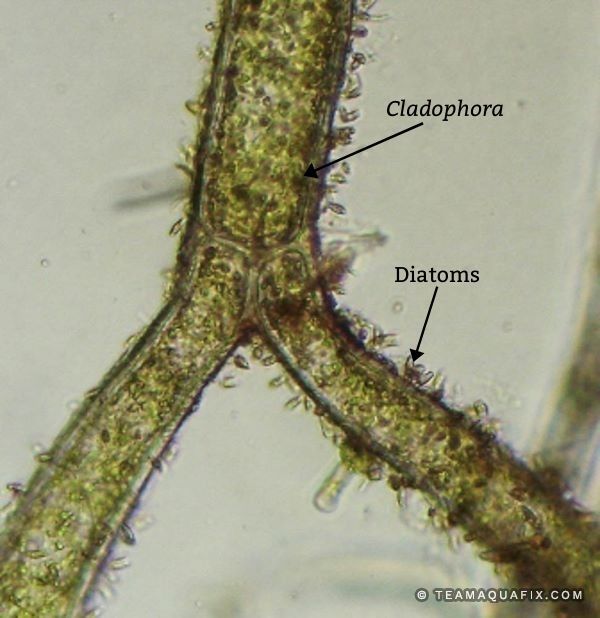
Cladophora likes to attach itself to clarifiers, outfalls, and concrete drainage canals; anywhere where there is flowing water. This alga will filter out the nitrates and phosphates, resulting in lower nutrients in the plant.
While Cladophora does not usually require treatment, mechanical removal is usually the most practical treatment method. If you are concerned about your lagoon (pond) conditions contact a technical rep for information and recommendations.
Because wastewater issues and the cause behind algae can be complex, we recommend our Filament ID and Microanalysis. This not only confirms algae and filament ID, but looks at biological indicators, plant design, and incoming substrates to decode your unique process.
Cladophora is a filamentous green alga that can be found attached to final clarifier weirs or attached to drainage canal walls. It thrives in eutrophic environments with high nutrients, however, high phosphorus levels are a driver for excessive growth. In the younger stage of life, Cladophora attaches to surfaces, however as it matures it can be free-floating. While this alga can be mechanically removed, it is a time-consuming process. It can form dense mats that feel “crusty” or coarse due to the carbonate crystals and diatoms attached to the outside of the filament. The filaments in this alga are arranged in a row and often have branching. The pattern of this branching can be influenced by water velocity. The cells of the filaments are longer than they are wide and have a thick cell wall. Cladophora can get much larger than most other alga, reaching up to 5 inches long. Some species of Cladophora in highly agitated areas may form unattached spherical structures called Cladophora balls.
Aside from mechanical issues such as clogging water intakes/outflows, Cladophora doesn’t negatively affect effluent. While Cladophora does not usually require treatment, mechanical removal is usually the most practical treatment method. If Cladophora is an issue in final clarifiers, fish can be added to control the growth of this alga. Cladophora has been known to do such a good job removing nitrogen and phosphorous from wastewater effluent, that Cladophora reactors have been proposed as an addition to wastewater treatment systems.
Encyclopedia Britannica, (2017), Cladophora. Britannica. https://www.britannica.com/science/Cladophora

39041 RGE RD 283,
Red Deer County, AB T4E 0M2
Phone: 1-888-466-0031 |
Fax: 1-888-507-9716
To place an order, please fill out the required fields below and proceed to checkout. Ensure all information is accurate, and feel free to contact our support team if you have any questions or need assistance. Thank you for choosing us!